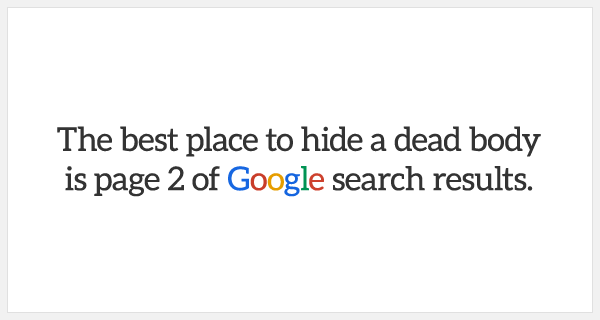
Let us ask you a question, what made you click on this post’s headline — whether you saw it on Facebook, Twitter, Google, or in an email?
Maybe you clicked it because it promised to solve a problem for you — how to write better headlines?
Or maybe because it promised you could learn to start writing headlines the right away?
Just like when you want to write copy for an advertisement, when doing content marketing it is crucial, to begin with, a stunning, attention-grabbing headline.
According to David Ogilvy, also known as “The Father of Advertising”, author of Confessions of an Advertising Man:
“on average, five times as many people read the headline as read the body copy. If you haven’t done some selling in your headline, you have wasted 80 percent of your client’s money.”
If you were not convinced yet, those should be some powerful words which should motivate you to start paying more attention to your headlines. Especially in today’s worlds where there is a rapidly shrinking attention span happening. Next, to that, there is advertisement everywhere and lots of content competing to get the attention of your target audience.
In other words, headlines are more important than ever!
In this blog post, we will talk you through an effective formula known as the Four U’s. The Four U’s is a strategy developed by Michael Masterson, and if you want to dig even deeper after reading this post, we suggest reading “The Copywriter’s Handbook” by Robert Bly – a must-read for copywriters, advertisers, and marketers.
So what are the 4 U’s and how can you use them to write more compelling headlines and copy? The Four U’s are to headlines, what AIDA is for your overall copy, and it stands for:
- Be USEFUL to the reader
- Provide the reader with a sense of URGENCY
- Convey the idea that the main benefit is somehow UNIQUE
- Do all of the above in a ULTRA-SPECIFIC way
Useful
The main reason potential new leads or customers are searching on the internet is to find valuable information that helps them to solve their most pressing problems.
This means that whenever someone sees a headline of your, whether it is in search results, or maybe even when not actively searching but passing by on of your headlines on social media, they must see relevancy in your headline. Relevancy, because he or she needs to know immediately that spending time consuming your content will help him or her get closer to solving the problems they are facing or helping them fulfil their desires.
If your headline does not seem relevant, they will go elsewhere. Therefore, it’s important you know your ideal target audience inside and out. Their fears…beliefs…insecurities…motivations…likes and dislikes…age group..etc. – so you can create messages that enter the conversations already taking place in their minds.
For example, when people are searching for ‘Growing my e-commerce business’ or ‘Experience world travel without any money’. Readers are not interested in you talking about yourself. All your readers care about is how they can benefit from what you’re telling them.
By doing so, by providing more value to the other side of the table, your reader will interpret that as you care enough to consider what is vital to them. And he will begin to trust you as a credible source for discovering new solutions to his problems and a source of useful information he can use time and time again.
Urgency
Urgency is probably one of the most powerful attention-grabber. Why? Because a sense of urgency encourages your prospect to act now rather than later. Because people searching the internet are famous for being in a hurry to solve a problem.

They want an answer to their problems right now. They want it to work fast, or when they see your headlines passing by on social media, for example, they want some guarantee that they are not wasting their time consuming your content or their money paying for your product.
Like we mentioned in the first step, you want to create a message that already continuous the conversation they are having in their minds. You can do this by making your potential reader feel it’s important to read your message right now.
You can do this by adding works like “this week”. For example, “Start making money from home this week” is one effective way to do this. Other phrases that help create a sense of urgency are “while supplies last”, “for a limited time only”, or “today”. You can probably think of much more.
Time-limited special offers like discounts or extra by a particular date also help create a sense of urgency.
By doing so, it becomes a natural reflex for someone spotting your headline to want to consume your content straight away to see how you can help them.
Unique
Uniqueness is critical because online you’re always fighting for attention. If your potential readers have seen similar content or similar benefits somewhere else, they won’t bother with clicking through on your content.
Trying to approach the “Unique” part of a headline can be done in two different ways, though. You can either find information that your potential readers will consider unique, or you can present useful information in a unique way.
It’s always relative easy if you have some unique approach to solving your potential customer’s problem of course, but for most of us what we do is already part of a crowded space. If you’re solution, or if you’re content is the same as your competitors then you must present it in a way that assures your prospects they haven’t tried this yet.
People like the novelty. Whenever you’re looking at your newsfeed on social media, or whenever you Google for a topic, you see a collection of articles, blog posts, or websites. What makes you choose one over the other?
For example, if you’re selling telling people how you got your idea for your business might not be that unique, but telling “How a Failed Startup Helped Mike Muhney Find a $47 Million Idea” is.
Ultra-specific
Did you ever wonder why so many headlines have a number in them? It’s because list articles or articles with numbers in them are one way to get ultra-specific.
If you give your potential audience specifics in your headlines, you prove that you understand them on a deeper level. That you get their struggle, understand their goals, and feel their pains.
As a potential reader, you know exactly what you’re going to get. Numbers are one way of achieving this, but you can also go beyond that to be even more specific. For example, they’re not just foods you shouldn’t be eating, but common foods you should not be eating. Not just date night ideas, but staying-at-home date night ideas.
By doing so, you are showing that your audience that you really “get” what they feel inside about this problem. And by describing specific benefits that they can connect with, they will trust you that you’ve got a solution that works.
How to identify if your headline is working?
According to Robert Bly, every time you finished writing a headline, you should ask yourself how strong it is in each of the 4 U’s.
By grading your headlines on a scale from one to four (one is weak, and four is strong), in each of the four U’s you can figure out how great your headline is. Robert says that it is rare that a headline will score a three or a four on all four U’s, but a good headline should at least try to score a three or a four on three of the U’s. If not, it is probably not as strong as it could be and you should consider rewriting it.
By taking this technique, you will be able to create compelling headlines that will have your prospects more likely to click on it, read it and if the rest of the content stays on par become your newest lead or customer.

